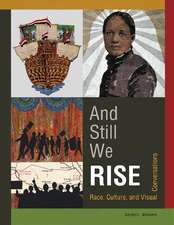Chicago Maritime: An Illustrated History
Autor David M. Youngen Limba Engleză Hardback – 26 sep 2001
This lavishly illustrated history of Chicago as freight handler to the nation chronicles the vital role of waterborne trade and transportation in building a metropolis on the swampland that the Illiniwek once called Checagou. Louis Jolliet, the first European explorer to the area, recognized that a waterway between the Great Lakes and the Mississippi River could link the Atlantic and the Gulf of Mexico, making Checagou the fulcrum of east-west and north-south transportation for the continent. Upon completion of the I&M Canal in 1848, Chicago quickly became one of the busiest ports in the world, attracting thousands of schooners, barks, sloops, and paddle-wheel steamships.
More than 100 illustrations and maps—along with tales of majestic sailing ships, piracy, terrible storms, and tragic shipwrecks—portray the eventful history of Chicago's waterways. Young describes the reversal of the Chicago River, which helped to clean the city and flood it with new life. Chicago flourished as a port of entry to the West and transportation hub, despite the disastrous Great Fire of 1871 that destroyed much of the city, including the docks and ships moored along the Chicago River. Marine disasters took their toll, too, as when the Eastland capsized in 1915, drowning nearly 900 passengers.
Through narratives by two famous travelers of Chicago's waterways, Charles Dickens and Abraham Lincoln, Young reveals the hardships and small comforts of lake and river travel in its heyday. He also tells of Chicago's marine traditions, such as the eagerly anticipated arrival of ships bearing Christmas trees that drew holiday crowds to the docks each year.
Today, giant car ferries and enormous ore carriers larger than battleships ply the lakes alongside luxury yachts, while the rivers that feed Chicago—and allow Chicago to feed the world—are still lively with traffic. Chicago's geographic advantages, which allowed it to eclipse competitors in the age of sail and steam, assure that it will remain a vital center for American transportation and commerce in the twenty-first century.
More than 100 illustrations and maps—along with tales of majestic sailing ships, piracy, terrible storms, and tragic shipwrecks—portray the eventful history of Chicago's waterways. Young describes the reversal of the Chicago River, which helped to clean the city and flood it with new life. Chicago flourished as a port of entry to the West and transportation hub, despite the disastrous Great Fire of 1871 that destroyed much of the city, including the docks and ships moored along the Chicago River. Marine disasters took their toll, too, as when the Eastland capsized in 1915, drowning nearly 900 passengers.
Through narratives by two famous travelers of Chicago's waterways, Charles Dickens and Abraham Lincoln, Young reveals the hardships and small comforts of lake and river travel in its heyday. He also tells of Chicago's marine traditions, such as the eagerly anticipated arrival of ships bearing Christmas trees that drew holiday crowds to the docks each year.
Today, giant car ferries and enormous ore carriers larger than battleships ply the lakes alongside luxury yachts, while the rivers that feed Chicago—and allow Chicago to feed the world—are still lively with traffic. Chicago's geographic advantages, which allowed it to eclipse competitors in the age of sail and steam, assure that it will remain a vital center for American transportation and commerce in the twenty-first century.
Preț: 339.24 lei
Nou
Puncte Express: 509
Preț estimativ în valută:
64.91€ • 67.96$ • 53.71£
64.91€ • 67.96$ • 53.71£
Carte tipărită la comandă
Livrare economică 05-19 aprilie
Preluare comenzi: 021 569.72.76
Specificații
ISBN-13: 9780875802824
ISBN-10: 0875802826
Pagini: 260
Dimensiuni: 216 x 279 x 20 mm
Greutate: 1.05 kg
Ediția:1
Editura: Northern Illinois University Press
Colecția Northern Illinois University Press
ISBN-10: 0875802826
Pagini: 260
Dimensiuni: 216 x 279 x 20 mm
Greutate: 1.05 kg
Ediția:1
Editura: Northern Illinois University Press
Colecția Northern Illinois University Press
Recenzii
"Incredibly comprehensive.... Young takes the reader on a fascinating journey."—Chicago Arts & Entertainment
"An engaging new book."—Chicago Sun-Times
"An engaging new book."—Chicago Sun-Times
Notă biografică
David M. Young, a former writer and transportation editor for the Chicago Tribune,is the author of Chicago Transit: An Illustrated History and Chicago Aviation: An Illustrated History.
Cuprins
Table of Contents
List of Maps
List of Tables
Preface
Introduction
Part I: From Canoes to Schooners
Chapter 1: The Canoe Routes
Chapter 2: The Riverboat Era
Chapter 3: The Age of Canals
Chapter 4: Chicago's Rivals
Chapter 5: From Portage to Port
Chapter 6: Schooners and the Reign of Sail
Part II: Life and Death on the Waters
Chapter 7: Traveling by Water
Chapter 8: Disasters
Chapter 9: Pirates
Chapter 10: Steam and Steel
Chapter 11: Sails or Rails?
Part III: The Twentieth Century
Chapter 12: The San, Cal-Sag, and Hennepin
Chapter 13: The River Renaissance
Chapter 14: Decline of the Great Lakes
Chapter 15: Chicago's Lost Opportunities
Epilogue
Notes
Bibliography
Index
List of Tables
Preface
Introduction
Part I: From Canoes to Schooners
Chapter 1: The Canoe Routes
Chapter 2: The Riverboat Era
Chapter 3: The Age of Canals
Chapter 4: Chicago's Rivals
Chapter 5: From Portage to Port
Chapter 6: Schooners and the Reign of Sail
Part II: Life and Death on the Waters
Chapter 7: Traveling by Water
Chapter 8: Disasters
Chapter 9: Pirates
Chapter 10: Steam and Steel
Chapter 11: Sails or Rails?
Part III: The Twentieth Century
Chapter 12: The San, Cal-Sag, and Hennepin
Chapter 13: The River Renaissance
Chapter 14: Decline of the Great Lakes
Chapter 15: Chicago's Lost Opportunities
Epilogue
Notes
Bibliography
Index
Descriere
This lavishly illustrated history of Chicago as freight handler to the nation chronicles the vital role of waterborne trade and transportation in building a metropolis on the swampland that the Illiniwek once called Checagou. Louis Jolliet, the first European explorer to the area, recognized that a waterway between the Great Lakes and the Mississippi River could link the Atlantic and the Gulf of Mexico, making Checagou the fulcrum of east-west and north-south transportation for the continent. Upon completion of the I&M Canal in 1848, Chicago quickly became one of the busiest ports in the world, attracting thousands of schooners, barks, sloops, and paddle-wheel steamships.
More than 100 illustrations and maps—along with tales of majestic sailing ships, piracy, terrible storms, and tragic shipwrecks—portray the eventful history of Chicago's waterways. Young describes the reversal of the Chicago River, which helped to clean the city and flood it with new life. Chicago flourished as a port of entry to the West and transportation hub, despite the disastrous Great Fire of 1871 that destroyed much of the city, including the docks and ships moored along the Chicago River. Marine disasters took their toll, too, as when the Eastland capsized in 1915, drowning nearly 900 passengers.
Through narratives by two famous travelers of Chicago's waterways, Charles Dickens and Abraham Lincoln, Young reveals the hardships and small comforts of lake and river travel in its heyday. He also tells of Chicago's marine traditions, such as the eagerly anticipated arrival of ships bearing Christmas trees that drew holiday crowds to the docks each year.
Today, giant car ferries and enormous ore carriers larger than battleships ply the lakes alongside luxury yachts, while the rivers that feed Chicago—and allow Chicago to feed the world—are still lively with traffic. Chicago's geographic advantages, which allowed it to eclipse competitors in the age of sail and steam, assure that it will remain a vital center for American transportation and commerce in the twenty-first century.
More than 100 illustrations and maps—along with tales of majestic sailing ships, piracy, terrible storms, and tragic shipwrecks—portray the eventful history of Chicago's waterways. Young describes the reversal of the Chicago River, which helped to clean the city and flood it with new life. Chicago flourished as a port of entry to the West and transportation hub, despite the disastrous Great Fire of 1871 that destroyed much of the city, including the docks and ships moored along the Chicago River. Marine disasters took their toll, too, as when the Eastland capsized in 1915, drowning nearly 900 passengers.
Through narratives by two famous travelers of Chicago's waterways, Charles Dickens and Abraham Lincoln, Young reveals the hardships and small comforts of lake and river travel in its heyday. He also tells of Chicago's marine traditions, such as the eagerly anticipated arrival of ships bearing Christmas trees that drew holiday crowds to the docks each year.
Today, giant car ferries and enormous ore carriers larger than battleships ply the lakes alongside luxury yachts, while the rivers that feed Chicago—and allow Chicago to feed the world—are still lively with traffic. Chicago's geographic advantages, which allowed it to eclipse competitors in the age of sail and steam, assure that it will remain a vital center for American transportation and commerce in the twenty-first century.











